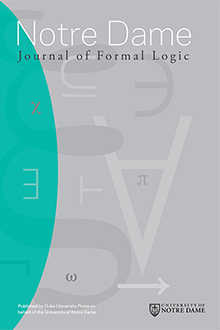Abstract
In his classic 1936 paper Tarski sought to motivate his definition of logical consequence by appeal to the inference form: P(0), P(1), . . ., P(n), . . . therefore ∀nP(n). This is prima facie puzzling because these inferences are seemingly first-order and Tarski knew that Gödel had shown first-order proof methods to be complete, and because ∀nP(n) is not a logical consequence of P(0), P(1), . . ., P(n), . . . by Taski's proposed definition. An attempt to resolve the puzzle due to Etchemendy is considered and rejected. A second attempt due to Gómez-Torrente is accepted as far as it goes, but it is argued that it raises a further puzzle of its own: it takes the plausibility of Tarski's claim that his definition captures our common concept of logical consequence to depend upon our common concept being a reductive conception. A further interpretation of what Tarski had in mind when he offered the example is proposed, using materials well known to Tarski at the time. It is argued that this interpretation makes the motivating example independent of reductive definitions which take natural numbers to be higher-order set theoretic entities, and it also explains why he did not regard the distinction between defined and primitive terms as pressing, as was the distinction between logical and nonlogical terms.
Citation
Jim Edwards. "Reduction and Tarski's Definition of Logical Consequence." Notre Dame J. Formal Logic 44 (1) 49 - 62, 2003. https://doi.org/10.1305/ndjfl/1082637614
Information





